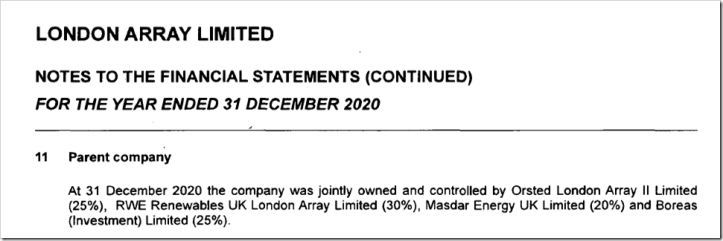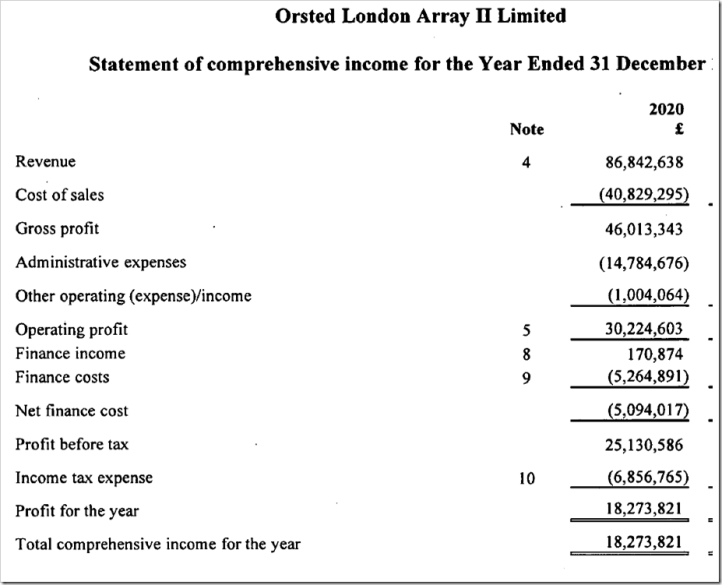
By Paul Homewood

London Array Wind Farm
I floated the idea yesterday of a windfall tax on recipients of Renewable Obligation Certificates. The whole system of ROCs, originally introduced by the Labour government, has all the makings of a massive scandal. Yet very few people are even aware of it.
To recap, ROCs are issued to many generators of renewable electricity. The system was closed to new entrants in 2017, when it was succeeded by Contracts for Difference. Suppliers of electricity have to possess a certain number of ROCs to cover their obligation each year, so either need to purchase renewable electricity or buy the ROCs. The market price set by OFGEM this year is £50.80.
Effectively therefore the value of ROCs is a subsidy to renewable generators, which comes on top of income from electricity sales. The cost of ROC’s, which is estimated at £6.4bn this year, is added to everybody’s electricity bills.

As an example, onshore wind farms typically receive one ROC per MWh. Historically, the wholesale price of electricity has been around £50/MWH, so the wind farm would earn around £100/MWh.
Offshore wind farms usually get two ROCs per MWh, so would have income of £150/MWh.
Renewable generators not only benefit from the subsidy, they also gain from having guaranteed income each year, dependent on the actual amount of power produced. In other ROCs protect them from the vagaries of the market place.
However wholesale power prices rocketed last year, and now stand at £112/MWh:

https://www.ofgem.gov.uk/energy-data-and-research/data-portal/wholesale-market-indicators
The offshore wind farm, which might have earned £150/MWh a year ago, is therefore now getting around £212/MWh.
OK, you might say, markets have winners and losers. Sometimes prices go up, and sometimes they go down. However, these renewable generators are already being largely protected against market downsides, thanks to subsidies paid by consumers. Why then should they profit when the price rises?
A very good example is the London Array offshore wind farm. It is joint owned by Orsted, RWE, Masdar and Boreas:

Orsted London Array II was set up for this operation and nothing else, and we can check their Annual Accounts for 2020, when they made pre-tax profit of £25.1m. As Orsted’s share of the wind farm is 25%, we can assume a total profit for the London Array of £100m:

Turnover was £86.8m, but subsidies made up most of this, £66.3m:

Again, scaling up gives sales of £80m and subsidies of £265m for the London Array as a whole. According to the Renewable Energy Foundation, electricity generation totalled 2591 GWh in 2020, equating to sales at £31/MWh and ROCs at £102/MWh. (Wholesale power prices were depressed in 2020 because of lockdowns).
With market prices now running at £112/MWh, turnover will increase by £210m this year for London Array.
Across the board, generators covered by ROCs produced 80 TWh last year, so would stand to make an additional profit of about £4.8bn a year at current prices.
At a time when energy consumers are having to pay out hundreds of pounds a year more, it is intolerable that generators such as London Array should be allowed to reap billions extra in windfall profits, not least when they are already heavily subsidised.
via NOT A LOT OF PEOPLE KNOW THAT
January 2, 2022


You must be logged in to post a comment.